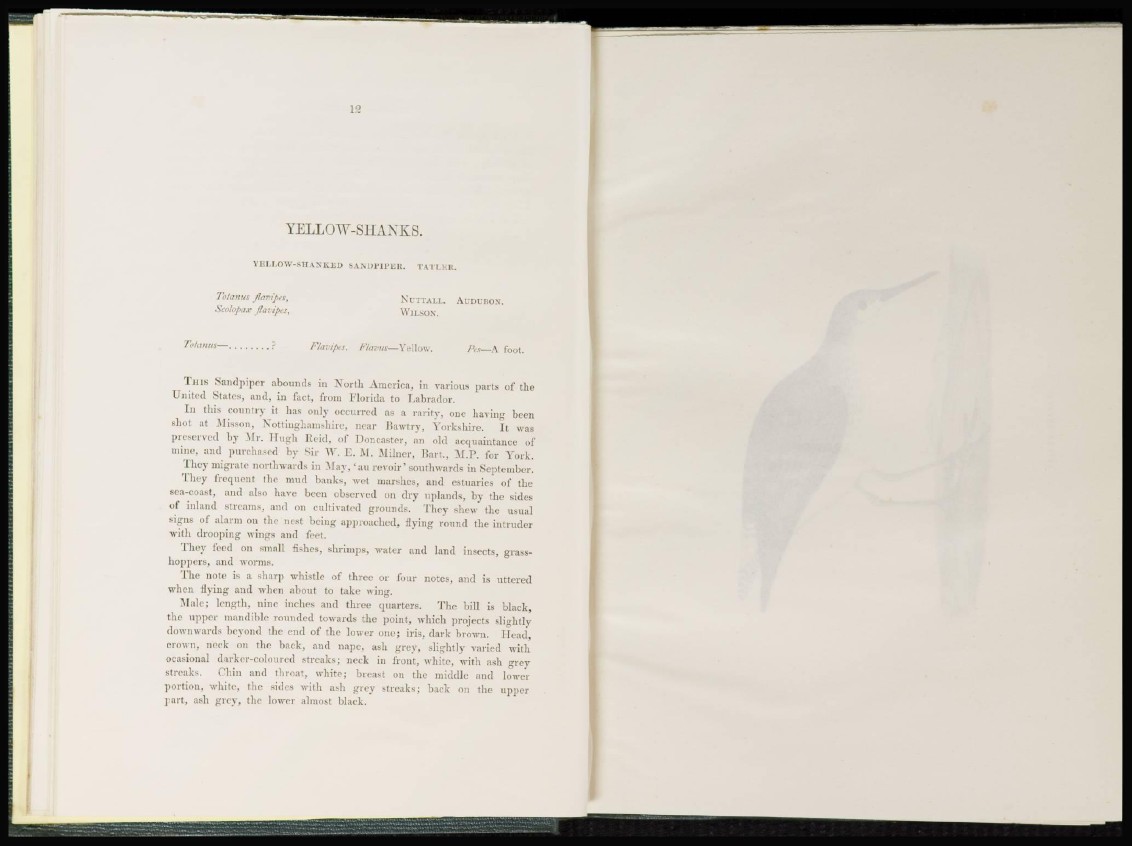
YELLOW-SHANKS.
YELLOW-SH AN K ED SANDPIPER. TATLER.
Totanus Jlavipest Nuttall. AUDUBON.
Scolopax flavipes, Wilson.
Totanus— ? Flavipcs. b'lavus—Yellow. Pes—A foot.
T h i s Sandpiper abounds in North America, in various parts of the
U n i t e d States, and, in fact, from Florida to Labrador.
I n this country it lias only occurred as a rarity, one having been
shot at Misson, Nottinghamshire, near Bawtry, Yorkshire. It was
preserved by Mr. Hugh Reid, of Doncaster, an old acquaintance of
mine, and purchased by Sir W. E. M. Milner, Bart., M.P. for York.
They m i g r a t e northwards in M a y , ' an r e v o i r ' southwards in September.
T h e y frequent the mud banks, wet marshes, and estuaries of the
sea-coast, and also have been observed on dry uplands, by the sides
of inland streams, and on cultivated grounds. They shew the usual
signs of alarm on the nest being approached, flying round the intruder
with drooping wings and feet.
They feed on small fishes, shrimps, water and land insects, grasshoppers,
and worms.
The note is a sharp whistle of three or four notes, and is u t t e r ed
when Hying and when about to take wing.
Male; length, nine inches and three quarters. The bill is black,
tin' upper mandible rounded towards the point, which projects slightly
downwards beyond the end of the lower one; iris, dark brown. Head,
crown, neck on the back, and nape, ash grey, slightly varied with
ocasional darker-coloured streaks; neck in front, white, with ash grey
streaks. Chin and throat, white; breast on the middle and lower
portion, white, the sides with ash grey s n e a k s ; back on the upper
p a r t , ash grey, the lower almost black.